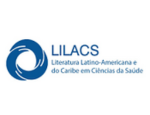First procedure of STEP in Uruguay
Keywords:
Short Bowel Syndrome, Bowel lenghtemiag technique,, Enteroplasty, UruguayAbstract
Introduction: The treatment of Short Bowel Syndrome (SBS) in pediatric patients is a great challenge due to its complexity and individual variability and requires a multidisciplinary team. It is based on 3 pillars: nutritional support, intestinal rehabilitation and transplantation. The concept of intestinal rehabilitation refers to those measures designed to promote the adaptation of the residual intestine, achieving the suspension or reduction of parenteral nutrition needs. The STEP procedure is highlighted as an alternative for intestinal lengthening.
Objective: dissemination of pathology as an increasing entity and communicate the first STEP procedure performed in Uruguay.
Clinical Case: Infant Newborn (INB) pre-term; prenatal diagnosis of gastroschisis, in the reception, almost total ischemic involvement of the small intestine and colon was detected, determining intestinal insufficiency due to SBS. The evolution of intestinal pathology from resection to intestinal adaptation is described, where the STEP technique stands out. We describe the procedure performed and the results obtained.
Discussion: The different surgical techniques for the treatment of SBS are compared. Highlighting the Bianchi procedure and STEP as intestinal elongation techniques. The bibliography is reviewed exhaustively. Conclusion: STEP procedure is performed, it is feasible and safe, with the benefits i
Downloads
Metrics
References
2. Bianchi A. Intestinal loop lengtheningda technique for increasing small intestinal length. J Pediatr Surg. 1980;15(2): 145-51.
3. Olieman J.F, Penning C, Ijsselstijn H, Escher JC, Joosten KF, Hulst JM, et al. Enteral nutrition in children with short- bowel syndrome: current evidence and recommendations for the
clinician. J Am Diet Assoc. 2010;110(3):420-6
4. Fitz Simmons J, Chiin A, Shepard TH. Normal length of the human gastrointestinal tract. PediatrPathol. 1988; 8(6):633-41.
5. Goulet O, Ruemmele F, Lacaille F, Colomb V. Irreversible intestinal failure. J Pediatr Gastroenterol Nutr. 2004; 38(3):250-69
6. Bueno J. Estrategias quirúrgicas en el intestino corto, Nutr Hosp. 2007;22(Supl.2):103-12 I
7. Thompson JS. Surgical rehabilitation of intestine in short bowel syndrome. Surgery 2004; 135(5):465-70.
8. Coletta R, Khalil BA, Morabito A. Short bowel syndrome in children:surgical and medical perspectives. Semin Pediatr Surg. 2014;23(5):291-7
9. Cserni T, Varga G, Erces D, Kaszaki J, Boros M, Laszlo A, et al. Spiral intestinal lengthening and tailoring e first in vivo study. J Pediatr Surg. 2013;48(9):1907-13
10. Sudan D, Thompson J, Botha J, Grant W, Antonson D, Raynor S, et al. Comparison of Intestinal Lengthening Procedures for Patients With Short Bowel Syndrome. Ann Surg. 2007;246(4):593-601
11. Frongia G, Kessler M, Weih S, Nickkholgh A, Mehrabi A, Holland-Cunz S. Comparison of LILT and STEP procedures in children with short bowel syndrome d a systematic review of the
literature. J Pediatr Surg. 2013;48(8):1794-805.
12. Walker SR, Nucci A, Yaworski JA, Barksdale EM. The Bianchi procedure: a 20-year single institution experience. J Pediatr Surg. 2006;41(1):113-9.
13. Modi BP, Javid, Jacksic T, Piper H, Langer M, Duggan C, et al. First report of the international serial transverse enteroplasty data registry: indications, efficacy, and complications. J
Am Coll Surg. 2007;204(3):365-71
Downloads
Published
How to Cite
Issue
Section
License
All articles, videos and images published in Revista Cirugía del Uruguay are under the Creative Commons CC licenses, which is a complement to the traditional copyright, in the following terms: first, the authorship of the referred document must always be acknowledged and secondly none of the article or work published in the journal may have commercial purposes of any nature. The authors retain their copyrights and give the magazine the right of first publication of their work, which will be simultaneously subject to the Creative Commons Attribution-NonCommercial 4.0 International License license that allows the work to be shared whenever the initial publication is indicated in this journal.


























